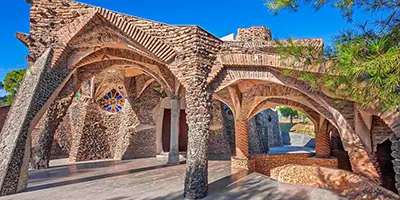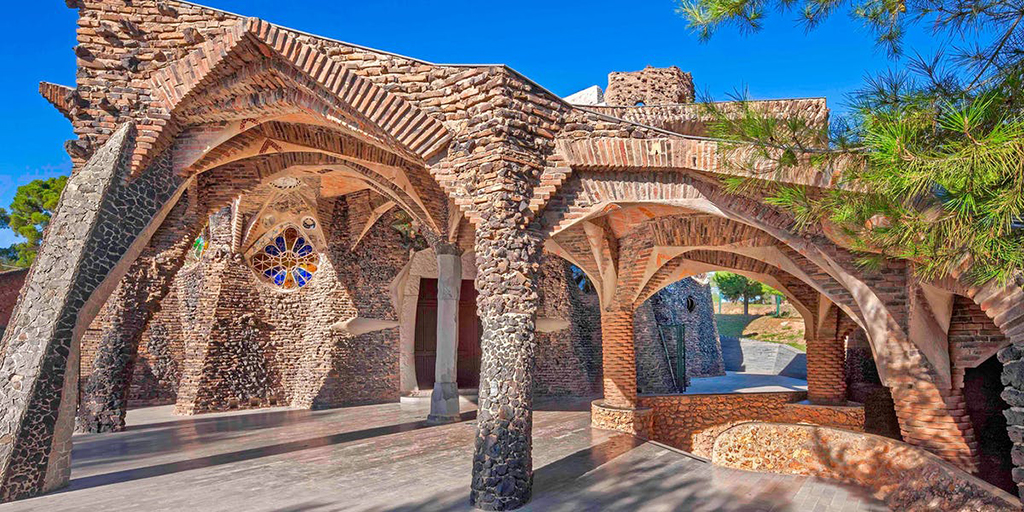This extraordinary piece of architecture is instantly recognisable as the work of Antoni Gaudi and is one of his few religious buildings, despite being a particularly committed follower of God himself.
Gaudi's signature style of dreamy angles is alive and well in the Church of Colonia Guell and for many it will remind them of some of the Cubist paintings of Pablo Picasso, such as Les Demoiselles d'Avignon, Mediterranean Landscape and Weeping Woman. The jutting angles are far from reality, and marked an important development in European architecture. Some groundbreaking work naturally came up against some resistance, but Gaudi enjoyed enough backing to be allowed to continue his style across other projects in the city of Barcelona. With the benefit of hindsight, we can now understand the significance of his career in developing the city into a major cultural spot. This church remains protected as part of the artist's overall collection that is protected by UNESCO status. This construction was put together between the years of 1898-1914 but was left unfinished. Recent attempts have been made to adapt the site to allow it to be more tourist-friendly and also adapt some of the areas that were falling into disrepair.
The work on this project would lead to several new technical discoveries for the architect, several of which would then continue to feature in some of his other work in later decades. We all remember Gaudi for his bright and bold designs but he was also a highly skilled technician, who understood the discipline of architecture particularly well and continually studied different methods found in historical building construction. It is rare for someone to have such a combination of flair and technical knowledge, making his oeuvre particularly impressive. Perhaps this places Gaudi in the same category of Michelangelo and Da Vinci, who were exceptional as draughtsman, sculpture and painting, even turning their hands to invention from time to time. Gaudi himself would then go on to produce furniture and interior design within his own buildings as well as much of the decorative features that cover his innovative building shells.
It was the crypt that was the closest to completion, with the rest left completely unfinished. As such, many now refer to this as the Güell Colony Crypt, rather than the original church. There are many drawings left over from Gaudi's career which outline just precisely what had been planned for the overall project, though he was never someone who went into too much detail in the early phases of design. He preferred to adapt as he went, which would certainly be more of a challenge for those responsible for putting his ideas into practice. Whilst the crypt would not have been visible had the entire structure been completed, it is in reality the only element that we can enjoy in the present day. Thankfully, it is so inspiring and breathtaking that even this incomplete construction can still rank amongst the finest buildings produced by Gaudi right across his entire career.
The use of bright colour is to be found in all of this architect's work and in the case of this incomplete church it is through a series of stunning stained-glass windows. He always considered the flow of light as an essential ingredient towards creating a feeling of space and calm, even when some of his projects were particularly restricted by tightly fitting existing structures. Another important aspect to this church is that many elements of the design would then be used in the La Sagrada Familia. For example, the chapels of both have a number of similarities and many believe that he used this project to prepare for what would become the pinnacle of his career. The drawing plans of both as well as the elements of the Sagrada Familia that have been completed would certainly backup this theory. This smaller scale church was also more flexible in terms of the license given to him by the donor and he was therefore able to try out a number of new ideas and experiments, with any successful outcomes proving useful for his later projects.





